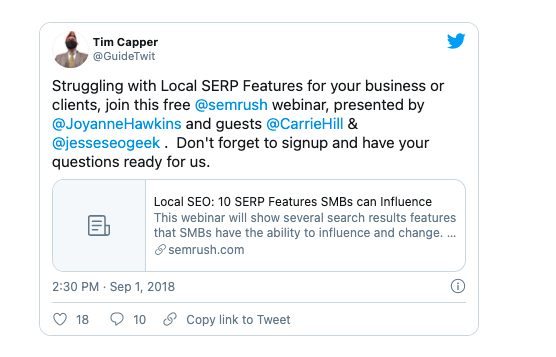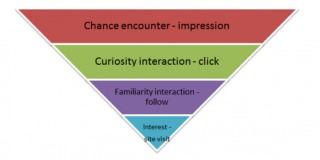Video marketing is booming. It’s no longer news. Cisco predicts that, globally, video traffic will be more than 80% of all web traffic by 2022 (up from a prediction of 75% made in 2017).
Other recent reports claim a 17% leap in video content usage in 2018, with the average person watching more than 90 minutes of online video every day. In the same report, 85% of surveyed consumers said they would like to see more videos from brands.
However, simply creating videos isn’t enough. Content marketing in general—and video marketing in particular—needs strategic planning to work.
For B2B marketing, the primary goal of content, video included, is often lead generation. That’s why, when it comes to B2B video marketing, a great strategy weaves individual videos into a “hub”—a long-term asset that can attract and nurture leads.
Let me explain…
Table of contents
From “videos” to “asset”: Planning your B2B video marketing strategy
When it comes to B2B video content, two potential long-term assets make sense:
- On-site knowledge base. Possibly gated, since the focus is lead generation.
- On-site and/or off-site video course. Your own video-on-demand channel for potential customers to join and stay engaged with.
Of course, there’s nothing preventing you from creating both. For example, Yoast offers a free gated knowledge base on their site as well as a repackaged version as a free video course on Udemy:
Planning your video marketing strategy around a lead-generating asset has two main benefits:
- It allows you (and your whole company) to understand how video creation efforts should come together.
- It helps create content for both the top and middle of your sales funnel, turning your site into a destination. People find videos more memorable and more useful than text content or pictures (e.g., infographics slideshows), which makes video a perfect fit for the purpose.
A video hub can attract traffic through search (if you come up with a searchable topic) and create new traffic via third-party sources. If you put a free course on LinkedIn Learning or Udemy, for example, you tap into those platforms’ user bases, discoverable through their internal search function.
Further, all sources are lead-nurturing mediums to engage with students or email subscribers on a regular basis—and get them closer to the final conversion:
- With a video course, you can engage your students by providing updates, hosting Q&A sessions, sending out a survey, etc.
- With an on-site knowledge base, email automation can reach out to leads to invite them to access new videos, provide feedback, etc.
Let’s look at the component parts of this overarching asset—individual video types that generate leads.
Choosing video types for lead generation
The first step is to come up with the “final asset” topic, which, ideally, combines all of the following criteria:
- Be based on a popular search query to rank and generate traffic on its own. Selecting keywords for your content is a huge topic that deserves a separate article, but you can refer to my detailed keyword research guide here as well as this quick exercise to see the process in action.
- Complement the products or services you sell. Videos should cover problems your product or service solves.
- Not be too specific. You’ll want to add fresh videos on a regular basis to re-engage your current viewers or email subscribers. A super-specific topic is a hub without spokes.
- Be on brand. Yes, determining what’s “on brand’ is a huge and complex topic. This thread from Wistia’s Phil Nottingham is an excellent summary (and justification) for creating videos for “brand affinity” not just “brand awareness.”
Moz has repackaged their popular Whiteboard Friday videos into a free standalone course on Udemy that ranks third on Google for “SEO training.” The course walks you through SEO basics—while also mentioning Moz’s tools as solutions to solve common SEO issues.
Plus, the topic of “SEO training” is broad enough to give limitless possibilities to add new videos as they’re created.
Once you have an idea of the topic for your video hub, create a video editorial calendar to align with it. You can mix and match video types to diversify your content:
- Influencer-driven videos (e.g., live videos, webinars, etc.);
- Demos and product walk-throughs;
- Customer-generated videos (e.g., live Q&A, video reviews, etc.).
All of these video types can address (and solve) relevant problems while suggesting your product as the solution. Let’s look at some examples of each.
1. Influencer-driven videos
To see a brand-owned, webinar-driven channel in action, check out SEMrush. They continue to grow their library of on-demand webinars featuring industry experts. You don’t have to opt in to watch a webinar, but you can put your questions or comments through a lead-generation form.
The beauty of collaborating with influencers for creating videos is that you can use their authority and existing community to generate leads before and after the webinar or live-video session:
Webinar marketing is multifaceted: Webinars educate, engage, automate, and convert, and each process supports the other in a cycle. That makes webinars a perfect medium for building a long-term video marketing strategy.
ClickMeeting refers to this as the webinar flywheel strategy, showing how you can use webinar marketing at every stage of the sales funnel and—at the same time—how it transforms the idea of the linear funnel into a cycle:
There’s no beginning or end here: Every part supports the other, similar to Hubspot’s Flywheel and, earlier, Jeff Bezos’s “virtuous cycle.”
As you’ll see later, the concept of “the whole drives the parts, and every part supports others as well as builds the whole” is exactly what a lead-generating video content marketing strategy should be.
2. Demos and product walk-throughs
If you’re selling a SaaS product, you’re likely doing product demos on a regular basis. There’s no reason why you can’t reuse some of those demo recordings to give your audience a glimpse inside your platform.
Product demos make great content assets. For example, Salesforce uses demos as gated content. And Coschedule uses them for blog content, even ranking some for pretty generic (i.e. high-volume) terms:
You can use your webinar solution to create product demos, or any of the many tools out there.
3. Customer-generated videos
Encourage (satisfied) customers to create video reviews of your tool. It can even be a contest to reward the best video creators. Depending on what you’re selling, you could also set up regular live video meetings with brand advocates to address audience questions.
It can be as simple as inviting your customers to ask questions through a branded hashtag for you to respond to in a (live) video. Google’s #AskGoogleWebmasters video series is a good example of this tactic in action.
Or, it can be a more advanced approach: Invite customers to make a video for you or join you in the video. For example, back when it was called “Google Hangouts,” we invited our community brand advocates to join a monthly video chat to discuss the best ways to use our platform.
Later, over at Viral Content Bee, we invited our current users to submit video tutorials of how they use the platform to include in our official Udemy course:
Seeing how established users use the platform helps our new or soon-to-be leads better understand all the possibilities. It also adds credibility—it’s not just us claiming what can be done; it’s real users showing how they’re getting value from it.
4 ways to repackage video content
One video may take plenty of time to create and edit. There’s no reason to use it only once. The beauty of video marketing is that it’s highly repackagable: You can come up with lots of alternative formats to use across channels:
1. Use the full video on your blog. Wistia offers custom branding as well as clickable calls to action and even opt-in forms inside the video—you could generate leads right from inside your video. Read about other video platforms here, or review this guide on how to embed videos on your site.
2. Create a text summary or put together a full transcript. This makes great content to go on your blog together with the video. You can also re-use screenshots or other images from the video to make the content more useful for people who choose not to watch the video.
This makes your page search-friendlier and more accessible to people with visual or hearing disabilities. Obviously, use best SEO practices as well as structured markup to ensure visibility in organic search.
Other options:
- Convert each article into a PDF and offer it as a bonus download through your course or knowledge base as an alternative way to review the content.
- Collect all those articles and combine them into an ebook. This one can also be a free download for your students/subscribers.
3. Create annotated video takeaways to publish on YouTube, Facebook, Twitter, Instagram, LinkedIn, etc. for brand visibility. Releasing shorter versions of your video using third-party platforms prompts users to look for the full videos, which can be found only on your site.
Tools like Placeit help you put together annotated videos and slideshows in seconds. Link everywhere you can to your blog post to try and build some traffic:
- YouTube: Link from the video description and (possibly) pinned comment.
- Facebook and LinkedIn: Link from the update or comment.
- Instagram: Link from Instagram stories.
4. Extract audio from your video, especially if it’s an interview or Q&A, and upload it to SoundCloud and iTunes. You could end up getting known as a podcaster if you do it regularly enough.
- The audio files can then be turned into an audiobook and offered as a bonus download through your course or knowledge base as an alternative way to consume the content (e.g., while driving).
To give you a better picture, this is what your final strategy may look like:
That’s exactly what I did when putting together my own video courses, including one on reputation management:
- Each chapter was based on a public article.
- Each chapter offers downloadable materials (ebook, audio version, and sometimes cheatsheet).
- Each audio file was reused as a podcast chapter on Soundcloud and iTunes.
- I market the ebook on my site as well as Slideshare.
This strategy generates multiple, complementary assets that increase brand awareness, generate traffic, and bring in leads:
When your course or knowledge base is live (i.e. fully formed), you can use all those channels to promote it, too.
Promote your asset via collaboration
To plan the whole strategy more effectively, use an editorial calendar like ContentCal. With ContentCal, you can:
- Schedule content campaigns and create content briefs.
- Add your whole team and manage permissions.
- Get your whole team working on promotional assets to support each channel effectively.
Finally, the influencers you included when creating videos (via interviews or webinars) can help you promote your video course or knowledge base. All you need is to ask!
- Email them with pre-made tweets to make it easier for them to share.
- Create custom images for your participating influencers to use when promoting your content.
- Tag them in tweets and Instagram updates whenever you share their video, or even the whole course.
You can also reach out to their friends by creating a follower targeting ad on Twitter or via Facebook remarketing.
Conclusion
B2B video marketing can be much more effective if you focus on creating a long-term asset that consolidates all your video creation and promotion efforts.
Embracing this approach also grows the number of channels that can increase brand visibility, providing new avenues to acquire and nurture your leads.





Thanks, Ann
I think, B2B video marketing is, in a nutshell, using video content with an inbound marketing approach with two main purposes: to attract potential prospects (lead generation) and to educate and persuade prospects until they are ready for a purchase (lead nurturing)